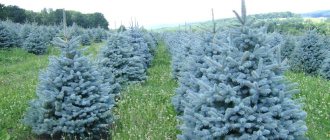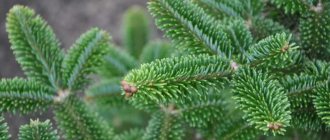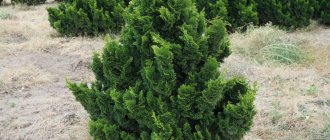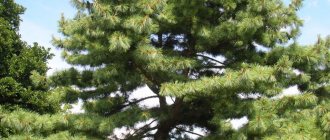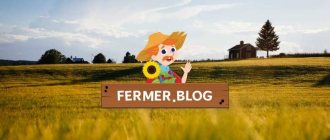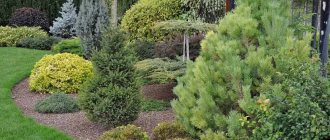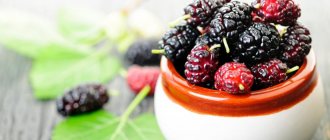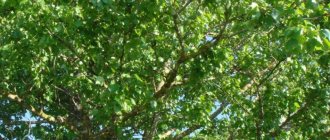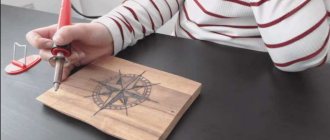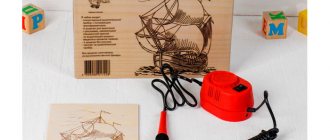Blue spruce, she's the same prickly (Picea pungens) - native to North America. But when she came to Europe, she immediately gained popularity there and quickly mastered the Russian expanses. It is loved for the spectacular color of its needles, symmetrical dense crown, unpretentiousness, wind and drought resistance, and ability to survive in severe frosts. This spruce is a real long-liver, its age can reach 500 years, but in the Russian climate, after 40 years, the spruce begins to lose its decorative qualities.
Varieties of blue spruce
Nature has endowed blue spruce with a spectacular appearance, but breeders have made an incredible breakthrough by studying natural mutations and creating the most incredible varieties. And today on the market there are spruce trees with a pyramidal and cone-shaped crown, dwarfs with a spherical and oval crown. And the color of the needles varies from silver to deep blue (1).
Glauca Globosa. Perhaps the most popular variety among Russian gardeners. It was obtained in 1937 from seedlings, and already in 1955 it entered the markets. A dwarf Christmas tree with a beautiful compact dense crown will grow no higher than 2 m, but up to 3 m in diameter. In the first years of life, the crown looks sparse and flattened, but then acquires a beautiful slightly elongated oval and density. The needles are long, slightly curved, white-blue in color. The cones are large and light brown in color. This variety is especially good when grafted onto a tall trunk.
Glauca globosa is frost-resistant (tolerates down to -40 ° C), light-loving, but can also grow in partial shade. Likes soils that are loamy, fertile, slightly acidic or neutral.
In gardens, this variety looks great in the front area, in rockeries and near retaining walls.
Dwarf Glauca Globosa (Glauca Globosa). Photo: pixabay.com
Hoopsii. It is considered the bluest of all blue spruces. This variety is the result of many years of work by German breeders from the Hoops Nursery. However, the history of the appearance and promotion of this variety has obvious discrepancies. More important is the fact that in the middle of the last century, an elegant blue spruce appeared on the market, growing moderately and only after many, many years reaching a height of 8 m; individual specimens can grow up to 12 m with a crown diameter of up to 3 - 5 m. This slender beauty at first seems slightly lopsided, but over the years the trunk straightens out, the thick wide crown becomes symmetrical, conical, the deep blue color of the needles begins to turn silver in the bright sun. The strength and solidity of this spruce is given by slightly raised branches (2).
The variety is frost-resistant (tolerates down to -40 °C), light-loving, but easily tolerates slight shading. Prefers soils that are loamy, moderately moist and fertile, well drained.
In gardens, this variety of spruce successfully serves as a Christmas tree. Therefore, its place is in the front part of the garden or in a private area against the backdrop of a lawn. Hoopsie can become a spectacular backdrop for dwarf and recumbent coniferous shrubs.
Spruce Hoopsii. Photo: pixabay.com
Majestic Blue. This variety is the state tree of the states of Colorado and Utah in the United States. It is no coincidence that its name is “majestic”. It is exactly like this: a slender tree up to 45 m high and up to 6 m wide, with noble grayish trunk bark and gray needles with a blue tint. And the needles are not small, 3 cm long, hard, tetrahedral. Their color changes throughout the year: from white to bluish-blue in autumn. Large cones appear on this spruce only on trees older than 30 years.
The variety is frost-resistant, tolerates down to -40 °C, but in such harsh conditions, by the age of 40-50 years, spruce loses its high decorative qualities. Light-loving, but easily tolerates shading, albeit to the detriment of decorativeness. Prefers soils that are sandy loam and loamy, moderately dry and fertile, well drained, with a reaction ranging from acidic to slightly alkaline.
This variety is so majestic that it requires significant space. In large gardens it can serve as a Christmas tree, or become a backdrop for ornamental shrubs and small conifers.
These three varieties are the most popular among gardeners, but there are others that are no less interesting:
- Glauca pendula (Glauca pendula) - 8 - 10 m high, with a straight or curved crown shape, hanging branches and silver-gray needles;
- Glauca procumbens (Glauca procumbens) is a dwarf form 20 cm high with an uneven spreading crown up to 1.2 m in diameter and silver-blue needles;
- Glauca prostrata (Glauca prostrata) is a dwarf form no more than 40 cm high with a flat crown lying on the ground, with a diameter of up to 2 m;
- Bonfire (Koster) - 10 - 15 m high, with a regular conical crown and bluish-green needles;
- Misty Blue - 5 - 7 m high with a conical crown and bluish-green needles.
Peculiarities
Depending on the species, dwarf spruce trees can be of different sizes. Thus, full-grown crops reach a height of 3 m, semi-dwarf - 30 cm, dwarf - 8-15 cm, mini-dwarfs - 38 cm, and micro-dwarfs do not grow above 3 cm. This is a conditional classification, but it allows a gardener who owns a small plot to make right choice.
Externally, dwarf spruce trees look the same as their tall relatives, only they are presented in miniature. These specimens do not take up much space and allow you to create garden compositions throughout the year. Decorative species winter well, and on New Year's Day they can be used as a Christmas tree in a pot.
The disadvantages of dwarf spruce trees include their vulnerability to fungi, but this problem is easily solved by timely removal of dry branches and treatment with fungicides.
The disadvantages of miniature varieties include their tendency to fade faster when exposed to sunlight, as well as the fragility of some types.
Planting blue spruce
For plants with a closed root system (ZKS), the best planting time is from mid-April to October, for seedlings with an open root system - until mid-April and the second half of September - early November.
The best option is seedlings in a container or with a packed earthen ball. The planting pit must be prepared in advance. Special fertilizers, preferably long-acting. No manure or fresh compost, as well as any nitrogen fertilizer, or ash. It is useful to add leaf humus, river sand and old sawdust or dry pine needles to garden soil.
When planting, it is important not to deepen the root collar, so plant at the same level as the seedling grew in the container. After planting, it is important to water the tree abundantly and ensure regular watering and showering during the growing season in hot weather.
When planting in spring, it is necessary to shade the seedling from the bright sun.
It is important to prepare young seedlings for the first winter by tying them with spruce branches or burlap.
Tips for choosing
Before choosing a variety, the gardener needs to study the prospects of an adult plant and decide how suitable the variety is for a particular garden plot. Perhaps you should take into account not only the size of the future tree, but also its external features and combination with other garden plantings.
So, varieties Nidiformis, Little Gem , and Canadian spruce are suitable for rock gardens. For container growing, experienced gardeners recommend choosing Canadian varieties, as well as types of common spruce. For small gardens and cottages for group or single plantings, you can choose Will's Zwerg, Pygmaea, Serbian spruce Nana. There are species that grow well on rocky hills, these include Formanek, Glauca Globosa, Nana.
In addition, when choosing a seedling, give preference to a specimen grown in a Russian nursery - it is more adapted for growing in our harsh conditions. The buyer should consider how much time he is willing to spend on maintaining the tree. For example, if the garden owner does not have time to wrap the plant at the end of winter to protect it from burns, then it is better to abandon some varieties of Canadian dwarf spruce.
Take into account the climatic conditions of the region. Most species are considered frost-resistant, and blue conifers also have high drought resistance compared to other varieties.
Blue spruce care
The varieties and forms of blue spruce are varied, winter-hardy, and capable of growing even in the harsh zones of our country. In general, they are unpretentious, but they still have their own care nuances.
Priming
The soil for planting spruce should be sandy or loamy, loose, well-drained. You need to put drainage in the planting hole, because these plants do not tolerate stagnant water. If the reaction of the soil solution is alkaline, ammonium sulfate or soil with litter from a coniferous forest is added to the soil.
Lighting
A beautiful, harmonious crown of blue spruce will only appear in a well-lit place. However, when planted in spring, a young plant requires shading in the first two weeks, as well as protection from sunburn in the first winter.
Watering
In nature, blue spruce grows on moderately moist soils and is a drought-resistant species. However, when planting, all varieties require high-quality watering in the first two years after planting. In the year of planting, watering is needed once a week at the rate of 10 - 12 liters of water per seedling no more than 0.5 m high. In hot weather in the evening or morning, a shower - washing - has a beneficial effect. To preserve moisture, tree trunk circles can be mulched with a thick layer of bark or softwood sawdust.
The most important condition for a good wintering of young plants is moisture-recharging watering. No matter how damp the autumn is, in October it is important to pour at least 20 - 30 liters of water under each coniferous tree for small plants and 50 liters for each meter of crown height.
Fertilizers
When planting, phosphorus-potassium fertilizers are used and old softwood sawdust is used as a conditioner.
Feeding
On fertile soils, spruce trees do not need fertilizing in the first 2 - 3 years after planting. In the future, if the tree is formed by pruning, in the spring special fertilizers for conifers are applied to the tree trunk circles. Free-growing spruce trees are fed only if they develop poorly.
When the needles turn yellow and fall off, as well as in the first year of planting, it is practiced to spray the crown with solutions of Epin and Ferrovit.
Varieties of dwarf spruce trees
Despite the clear definition of dwarfism in spruce trees, there is a certain gradation of these conifers, which helps to understand whether you are growing it or not. It all depends on the annual growth. Therefore, we can divide all dwarf representatives into groups:
- microdwarf spruce trees are those that during the growing season grow only a couple of centimeters, maximum 3;
- mini-dwarf spruce trees are conifers that increase the ground part by 3-8 cm per year of growth;
- dwarf spruce trees grow up to a maximum of 15 cm per year.
Of course, these data are approximate, so you shouldn’t check them strictly with a ruler.
Reproduction of blue spruce
Blue spruce propagates by seeds, winter cuttings and grafting. It is this species that is easier to propagate by seeds than by cuttings.
Seeds. With the seed growing method, varietal characteristics are not preserved. However, with this method there is a chance to obtain plants with deeper colored needles, as, for example, happened with the birth of the Hoopsie variety.
With this method of cultivation, it is important that the seeds are fresh and have undergone stratification. 2 - 3 days before sowing, the seeds are transferred to a warm place and dried. Sowing is done to a depth of 1 - 2 cm in boxes or in a greenhouse, adding fungicides and fertilizers for conifers to the light substrate. The crops are regularly watered and ventilated, after 2 - 3 years they are transplanted to a growing bed for growing, and only at the age of 6 - 7 years are they planted in a permanent place.
By cuttings . Cuttings for rooting are taken from the upper branches of mother plants no younger than 6-8 years old. This is done on a cloudy day in April, June, August or October, tearing it off from a branch with a heel - a piece of trunk bark. A good cutting should be 7 - 10 cm long.
Immediately after harvesting, the lower needles of the cuttings are removed and the sections are dusted with powder of a root formation stimulator (for example, Heteroauxin). Then the cuttings are planted in pots with light fertile soil at an angle of 30°, deepened by 2 - 3 cm. The pots are placed in a greenhouse or covered with a plastic bag. Once a day, planting must be ventilated.
Be patient - the rooting process can take up to one year. And during this period, it is important to regularly water and ventilate the plants. Once every 2 weeks you can add a weak solution of Heteroauxin to the water.
In the spring, rooted cuttings are planted in a schoolyard, which is arranged under the canopy of trees. Only after three to four years can the grown plants be planted in a permanent place.
From seeds
The cones are collected in November, after the first frost. Only closed and whole fruits can be collected.
Important! When propagating by seeds, it is worth considering that only 35-40% of the total harvest will retain the characteristics of the variety. The rest may resemble an ordinary green Christmas tree. The collected fruits are left in a warm place until all the scales open.
Then the collected seeds are subjected to stratification. They are treated with a weak solution of potassium permanganate to kill germs. Then it is placed in a bag and lowered into a glass jar. The entire structure is left in the refrigerator until spring.
To awaken the planting material after stratification, it is filled with a root-forming and antifungal solution. 10-12 hours in a humid environment is enough. After such preparation, the seeds can be planted in:
- open ground
- individual containers
- roll-your-own cigarettes
Diseases of blue spruce
Rust (spruce spinner). A fungal disease that initially appears on the bark in the form of small, orange swellings with a diameter of 0.5 cm. Then the needles begin to turn yellow and fall off. Cones can also be affected by rust.
In the initial stage, it is necessary to regularly collect diseased needles and cones, cut out and burn branches affected by the fungus. Sick plants must be sprayed with Hom (copper chloride) (3) or Racurs. To prevent the disease in the spring, spray with Bordeaux mixture.
Schutte. The culprit of the disease is a pathogenic fungus. It infects spruce in the fall and actively develops under snow cover. As a result, in the spring, brown needles with a white coating appear on the diseased plant. Affected needles can remain on the spruce tree for another year, spreading the disease. Schutte affects the development of the plant and, if severely damaged, can cause the death of spruce.
To prevent the disease, spring spraying with Bordeaux mixture or colloidal sulfur solution is used. The affected branches are removed from diseased plants and the spruce is sprayed three times with Khoma or Rakurs solution (3).
Pests ate blue
Spruce spider mite. It attacks spruce trees in the hot, dry months of the year. The mite damages the needles and makes them vulnerable to fungal diseases. If the infection is severe, the needles turn brown and fall off, and cobwebs appear on the plants.
For prevention, regular dousing of tree crowns with water is practiced. Mites can be destroyed only by treating the crowns with Actellik, Anti-Mite, Fitoverm (3). It is important to carry out at least 3 treatments from June to September.
Spruce sawfly. Tiny sawfly larvae actively eat the needles. But we notice these damages only when the young needles become reddish-brown in color.
In the initial stage of infection, spraying with Actellik or Fury is effective. The most effective drug for sawflies is Pinocid. Spray the tree with the solution 2-3 times. At the same time, they water the soil around the tree trunks.
Spruce-fir hermes. A small variety of aphids infects the plant, leaving twisted and yellowing shoot tips. Pests overwinter in folds of bark.
Hermes can only be overcome with a systematic approach. In the spring, spraying with copper sulfate, in early May and in the third decade of June - with Aktellik, Komandor, Fufanon with watering of tree trunk circles with Aktara's solution. In the second half of August - treatment with copper sulfate solution.
general information
North America is considered to be the original habitat of blue spruce.
North America is considered the original place of growth of blue spruce. In nature, this tree grows in the highlands, which is why it is well adapted to low temperatures and gusty winds. In Russia, this type of tree is widely used as an ornamental tree.
Blue spruce has gained popularity not only due to its beauty, but also due to its ease of care.
The main difficulty arises only at the very beginning of the tree’s growth. Further, it requires virtually no human intervention. The key to good growth is proper determination of the planting site. Almost all varieties of blue spruce do not like shady areas. Some like loose soil, and several varieties can even grow in rocky areas.
Popular questions and answers
agronomist Oleg Ispolatov about blue spruce - he answered the most popular questions from summer residents.
How tall is a blue spruce?
Most varieties of blue spruce are real giants, adult specimens reach 20 - 45 m in height. And this must be taken into account when purchasing and planting a plant in your garden. For small private gardens, I would recommend varieties with a compact crown and optimal height.
How to use blue spruce in landscape design?
Tall varieties of spruce are ideal tapeworms (single plants). But they can be the basis of complex mixborders of ornamental shrubs and small conifers, hedges. Varieties such as Glauka globoza are good for gardens in a regular style.
Should blue spruce be pruned?
Sanitary pruning of spruce trees is mandatory. But blue spruce also tolerates decorative pruning. With its help, you can not only reduce the height of plants, but also make the crown more dense. Using shearing, they are formed into balls, cubes and other topiary shapes. As a rule, pruning begins when the plants reach 8 years of age.
How to stop?
Having grown a tree to a certain height, home or professional designers often wonder how to limit the growth of a spruce tree while maintaining its decorative value.
Even if there is a tree on your site that was once dug up in the forest, it can be improved by regular pruning. But this must be done annually, without waiting for the crown and branches to become woody.
If you use the option of “cutting down” the crown to stop growing in height, the mature tree will look unsightly. Instead of one crown, several will grow, which will try to take a dominant position in crooked ways.
Cutting down the side branches will lead to bare branches, since the closer to the trunk, the fewer needles on the branches. But new buds don’t grow here.
To give the plant the desired shape and limit growth, you need to carefully monitor new shoots. In spring they actively begin to grow. They should not be cut off, but carefully torn off, turning them out of the bosom. This method is called pinching. In spring, young branches are very soft, and removing them without tools will not be difficult. The same method is used when forming a bonsai-style crown. Tools are not suitable here - only hand work with each branch.
Using the second method - cutting with manual or electric pruners, you can create living spruce shapes: a ball, a cone or a square. To use this method, you need to get a good tool so as not to crush the branches, namely: cut them. Regular sanitary cutting in order to maintain the existing height is carried out at the end of summer, before the onset of dormancy. In this case, the cuts will have time to tighten before the onset of frost.
The shoots are cut to one or two three times the total length so that the green mass from the entire tree is reduced by no more than 1/3.
If there is a need for spring pruning, then this should be done in early spring before the time of bud growth. If you follow all the recommendations, the Christmas tree will have the height and shape that you desire. And delight you with its beauty all year round. And in winter, decorated with New Year's lights and balls, it will create the best mood for the time of wish fulfillment.
See below for information on the growth of coniferous plants.
Sources
- Stupakova O.M., Aksyanova T.Yu. Compositions of perennial herbaceous, woody coniferous and deciduous plants in urban landscaping // Conifers of the boreal zone, 2013 https://cyberleninka.ru/article/n/kompozitsii-iz-mnogoletnih-travyanistyh-drevesnyh-hvoynyh-i-listvennyh-rasteniy- v-ozelenenii-gorodov
- Gerd Krussman. Coniferous species. //M., Timber Industry, 1986, 257 p.
- State catalog of pesticides and agrochemicals approved for use on the territory of the Russian Federation as of July 6, 2022 // Ministry of Agriculture of the Russian Federation https://mcx.gov.ru/ministry/departments/departament-rastenievodstva-mekhanizatsii-khimizatsii- i-zashchity-rasteniy/industry-information/info-gosudarstvennaya-usluga-po-gosudarstvennoy-registratsii-pestitsidov-i-agrokhimikatov/
